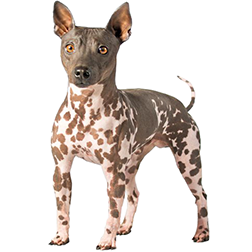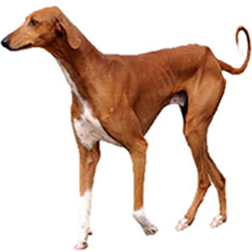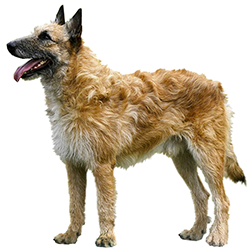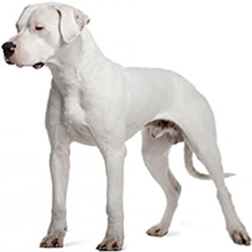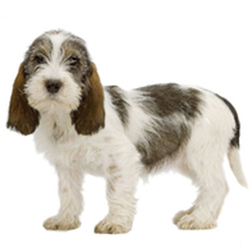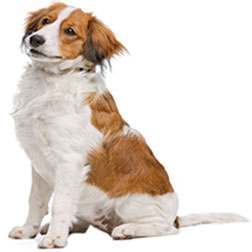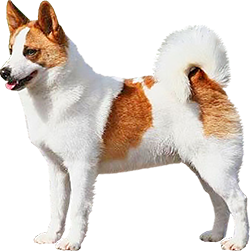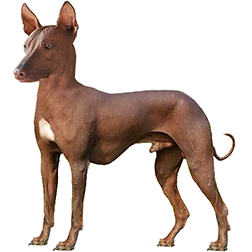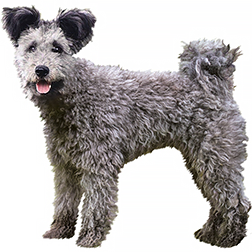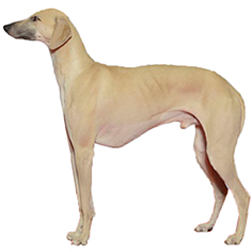Welcome to the World of the Miscellaneous Dogs
Introduction: A World of Unique Canines
"Imagine stepping into a world of delightful unpredictability—a place where dogs defy easy categorization. These are the breeds that dance to their own beat, bursting with personality and charm. Welcome to the Miscellaneous Dog Group, the wild card of the canine kingdom."
- The Meaning Behind "Miscellaneous": This group includes breeds that are recognized by kennel clubs but are not yet fully classified into other established groups like herding, sporting, or working. Highlight how this group serves as a 'waiting room' for breeds gaining recognition or transitioning toward full classification.
- Why These Breeds Matter: Introduce the importance of these unique dogs, emphasizing their roles in history, culture, and modern-day life. Discuss their diversity in traits and capabilities, showcasing how they are more than just 'miscellaneous'—they are pioneers of individuality.
- A Journey of Discovery: Tease the topics to come, from their quirks and care needs to their historical significance. Set the stage for an engaging exploration of what makes this group so special.
A Journey Through the Miscellaneous Dog Group’s World
Picture this: a dog with a distinctive hairless coat struts proudly by your side, turning heads at every corner. Nearby, a sleek, desert-born hound dashes with elegance, while a cheerful, duck-retrieving Dutch dog playfully wags its tail. The Miscellaneous Dog Group is a tapestry of diverse breeds, each with its own flair, history, and purpose—an ensemble that defies categorization.
This group offers a kaleidoscope of surprises, from the striking agility of the Pumi to the ancient elegance of the Azawakh. As you journey through their world, you’ll discover dogs bred for everything from companionship to hunting to performing specific tasks, all unified by their distinctive individuality.
Why This Group Captivates Dog Lovers
Dog lovers are irresistibly drawn to the Miscellaneous Group because it feels like a treasure chest waiting to be unlocked. These breeds offer something for everyone—a mix of the familiar and the exotic.
Are you enchanted by the sleek beauty of the Sloughi, reminiscent of windswept dunes? Or do you love the quirky charm of the Norrbottenspets, a rare gem from Scandinavia with its foxlike alertness? This group brings a sense of adventure for those seeking a breed that stands out from the pack. For many, the joy of owning one of these breeds lies in their unique blend of history, charm, and versatility.
Surprising First Impressions
Not all breeds in the Miscellaneous Group are as niche as you might think! For instance:
- The American Hairless Terrier isn’t just a curiosity for its lack of fur—it’s a hypoallergenic breed that’s fantastic for people with allergies.
- The Grand Basset Griffon Vendéen might look like a relaxed, shaggy companion, but don’t let its demeanor fool you—it was bred for stamina and excels in trailing game.
- Despite its elegant and exotic appearance, the Peruvian Inca Orchid is a playful and loyal family dog.
This group challenges the notion that "Miscellaneous" means ordinary—each breed carries its own surprises, debunking myths and shattering stereotypes.
Naming Origins and General Characteristics
The name “Miscellaneous” may sound like an afterthought, but it reflects the transitional nature of these breeds in the world of kennel club classification. Many are on the cusp of joining established groups but currently fall into this dynamic category as their registries grow and their traits are further evaluated.
As for their general characteristics, expect a delightful variety. Breeds like the Belgian Laekenois showcase a rustic, hard-working spirit, while the Nederlandse Kooikerhondje is known for its bright and cheerful personality. Physical attributes range from the slender grace of the Azawakh to the sturdy athleticism of the Dogo Argentino. While their temperaments and care needs vary, they all share a unique charm that makes them unforgettable.
Historical Background of the Miscellaneous Dog Group
From Ancient Roots to Modern Homes
The breeds in the Miscellaneous Dog Group are as diverse in their histories as they are in their appearances. Many trace their origins to specific tasks or cultural roles that defined their development. For example, the Azawakh, with its sleek frame and regal bearing, hails from the Saharan desert. It was bred by the Tuareg people as a guardian and hunting companion, thriving in one of the world’s harshest climates.
Meanwhile, the Grand Basset Griffon Vendéen emerged from the French countryside, designed for its endurance and skill in trailing game over rugged terrain. These dogs, with their shaggy coats and unassuming charm, were indispensable to rural hunters. In contrast, the Nederlandse Kooikerhondje, a cheerful retriever, played a key role in Dutch duck-hunting traditions, its waving tail luring waterfowl into traps—a testament to the breed’s ingenuity.
These breeds transitioned into modern homes not simply as workers but as beloved companions. Their histories of resilience and partnership have shaped their adaptability, making them excellent choices for families, hobbyists, and professionals alike.
Legends and Lore
The Miscellaneous Group’s breeds are steeped in folklore and tales that showcase their extraordinary qualities:
- The Azawakh was said to be so prized by the Tuareg people that only nobility and tribal leaders could own them. They were considered gifts of honor, reflecting the dog's high status in their society.
- Stories from France describe the Grand Basset Griffon Vendéen as relentless in its pursuit of prey, earning a reputation as a “hound that never gives up.”
- The Peruvian Inca Orchid, a breed revered by ancient civilizations in Peru, was depicted in pottery and believed to have mystical healing powers due to its hairless skin and warm touch.
These stories not only celebrate the breeds’ unique abilities but also underscore their importance to the people who bred and cherished them.
Cultural Connections
Each breed in this group reflects its cultural origins, offering a glimpse into the traditions and values of the societies that shaped them.
- The Belgian Laekenois, one of the four Belgian Shepherds, was once a fixture on farms, herding sheep and guarding linens drying in fields. Its rustic charm and hardworking nature embody the agricultural spirit of Belgium.
- In Sweden, the Norrbottenspets became a symbol of rural life, cherished for its foxlike hunting prowess and adaptability in the northern wilderness.
- The American Hairless Terrier, developed in the United States, represents a modern approach to breeding—prioritizing hypoallergenic traits to suit urban pet owners.
These breeds serve as living artifacts, each carrying a piece of history and culture into today’s homes.
Classification and Standards of the Miscellaneous Dog Group
What Makes This Group Unique?
Imagine the Miscellaneous Dog Group as the waiting room of the canine kingdom—a space where breeds gather, each with their own charm, waiting to be ushered into the spotlight of full classification. Unlike other groups with clear definitions (think the Toy Group, full of pint-sized dazzlers, or the Working Group, bustling with robust laborers), the Miscellaneous Group is a delightful grab bag of canine diversity.
These breeds are like trailblazers—unique in their purpose, history, or appearance, and not easily pinned down to one traditional category. For instance, the Dogo Argentino, a muscular and courageous breed originally developed for big game hunting, stands alongside the Peruvian Inca Orchid, a svelte, hairless breed known for its elegance and mystique. It’s this diversity that makes the group so captivating, showcasing the full spectrum of what dogs can be.
Meet the Judges
Classifying dogs is no easy task, and kennel clubs face a myriad of challenges when determining where a breed fits. Think of the judges as curators at an art museum, deciding which gallery best suits each masterpiece. To qualify for the Miscellaneous Group, a breed must first meet specific criteria, including a demonstrated history and purpose, a consistent breed standard, and active interest from breed clubs.
But even with these guidelines, debates abound. Judges sometimes face heated discussions over traits like size, coat type, or temperament. Fun fact: The Belgian Laekenois, now part of the Miscellaneous Group, had to fight for recognition alongside its fellow Belgian Shepherds, proving its distinctiveness and worth as an individual breed.
And it’s not all serious business—judges often share anecdotes of charming mischief during evaluations, like a Kooikerhondje enthusiastically retrieving a non-existent duck or a Pumi showing off its signature "smile" during the examination.
Breed Wars
The journey to recognition isn’t always smooth, and the Miscellaneous Group is no stranger to controversy. Take the Sloughi, for example: its elegant, sighthound lineage sparked debates about whether it should be placed with other hounds or kept in Miscellaneous until its traits were better defined. Similarly, the American Hairless Terrier faced scrutiny over whether its lack of fur was a blessing (for allergy sufferers) or a limitation in colder climates.
These debates, while sometimes contentious, highlight the passion and dedication of breeders and enthusiasts in preserving their dogs' unique characteristics. They also add a layer of intrigue—how often do you see a spirited argument about dog fur make the news?
Variations Across Regions
If you’ve ever traveled abroad and noticed subtle differences in your favorite snack, you’ll understand how classification standards can vary. In the United States, the American Kennel Club (AKC) governs the Miscellaneous Group, but in Europe, the Fédération Cynologique Internationale (FCI) operates with its own system.
For example, the Azawakh is already fully recognized in many international hound groups but remains in the AKC's Miscellaneous Group. Likewise, the Norrbottenspets enjoys recognition in Nordic countries, where its hunting skills are celebrated, yet it’s still awaiting broader acknowledgment in other registries.
These regional variations reflect how cultural priorities and historical context shape breed classifications, further enriching the story of the Miscellaneous Dog Group.
Physical Characteristics of the Miscellaneous Dog Group
A Walk Through the Lookbook
Step onto the runway, where each dog in the Miscellaneous Group struts their stuff with unmatched style and individuality. Picture the sleek elegance of the Azawakh, its lean, statuesque frame gliding effortlessly like a desert breeze. Then there’s the Pumi, with its bouncy, curly coat and mischievous grin, exuding a charm that’s impossible to resist.
The Grand Basset Griffon Vendéen, on the other hand, is all about rustic chic with its shaggy coat and drooping ears—a look that’s both endearing and practical for trailing game. Meanwhile, the Belgian Laekenois rocks a tousled, wiry coat, perfect for days spent guarding the flock.
This diverse group showcases dogs of all sizes, from the compact and sturdy American Hairless Terrier to the long and graceful Sloughi. Whether their coats are silky, wire-haired, or non-existent, each breed brings its own flair to this eclectic collection.
Quirky Traits and Fun Facts
Every dog in the Miscellaneous Group comes with its own set of unique features, making them stand out in unforgettable ways:
- The American Hairless Terrier is not only hairless but also hypoallergenic, making it a game-changer for dog lovers with allergies.
- The Nederlandse Kooikerhondje has a distinctively feathery white tail that waves like a beacon, attracting ducks during hunts—a natural showstopper.
- The Peruvian Inca Orchid has skin so warm it’s been likened to a living hot water bottle, a delightful feature for chilly evenings.
- The Pumi’s upright ears, often described as “half alert, half whimsical,” give it a perpetually curious expression, as if it’s always ready for the next adventure.
These quirks aren’t just for show; many evolved from the breeds’ original roles, offering practical benefits that continue to define them today.
Diversity Within the Group
One of the most remarkable aspects of the Miscellaneous Dog Group is its sheer variety. From the desert-adapted Azawakh, built for speed and endurance, to the compact and agile Norrbottenspets, designed for hunting in dense Nordic forests, this group spans a wide range of forms and functions.
Each breed’s physical traits reflect their unique origins and purposes, yet they all share an undeniable beauty and adaptability. Whether you’re drawn to the muscular grace of the Dogo Argentino or the delicate refinement of the Sloughi, this group offers something for every aesthetic preference.
Celebrating this visual diversity not only highlights the group’s adaptability but also reminds us of the endless ways dogs have evolved alongside humans, serving as companions, workers, and cherished family members.
Temperament and Personality of the Miscellaneous Dog Group
The Group’s Signature Charm
If the Miscellaneous Dog Group had a tagline, it might be "Expect the Unexpected." These breeds are as varied in personality as they are in appearance, yet each one carries a signature charm that makes it unforgettable.
Take the Pumi, for example. Known for its lively and mischievous demeanor, this breed is often referred to as the class clown of the dog world. With boundless energy and a knack for keeping its owners entertained, the Pumi can turn even the dullest day into an adventure. Then there’s the Azawakh, whose aloof elegance belies a deep devotion to its family. This breed may be reserved with strangers, but with loved ones, it’s a tender and loyal companion.
For many, the Grand Basset Griffon Vendéen epitomizes the group’s friendly and easygoing charm. Its laid-back personality and love of socializing make it the life of any gathering, whether it’s a family picnic or a day at the dog park.
What Owners Love Most
Ask owners of Miscellaneous breeds what makes their dogs special, and you’ll hear a range of heartwarming answers. The American Hairless Terrier, for instance, is celebrated for its affectionate and curious nature, always eager to explore the world while staying close to its humans.
The Nederlandse Kooikerhondje wins hearts with its cheerful, playful spirit. Owners often share stories of their dogs’ joyful antics, from splashing in puddles to expertly retrieving toys with a wagging tail. Meanwhile, the Dogo Argentino, despite its strong and powerful build, is deeply empathetic and protective, making it a gentle giant with a heart of gold.
These breeds are not just pets; they’re family members who bring laughter, comfort, and endless joy to their households.
Unexpected Personalities
One of the most delightful surprises in the Miscellaneous Dog Group is how often these breeds defy expectations. Take the Peruvian Inca Orchid—with its exotic, almost otherworldly appearance, many expect it to be aloof. But this breed is a loving cuddle bug, often happiest snuggled up with its family.
Similarly, the Norrbottenspets, with its sharp hunting instincts, is surprisingly adaptable to life as a devoted family companion. Its ability to transition from a focused hunter to a playful pet showcases the breed’s versatility.
Then there’s the Sloughi, often mistaken for being overly serious due to its regal demeanor. In reality, this breed has a playful side, delighting in games of chase or zooming around the yard in bursts of joyous energy.
These unexpected traits remind us that dogs, like people, are full of surprises, with personalities that can’t always be captured by their appearances or breed standards.
Purpose and Roles of the Miscellaneous Dog Group
Original Roles and Modern-Day Marvels
Each breed in the Miscellaneous Dog Group has a story rooted in purpose—whether guarding flocks, hunting game, or providing loyal companionship. Over time, these roles have evolved, showcasing the adaptability of these breeds in our modern world.
The Belgian Laekenois, originally a shepherd and protector of linens left to dry in Belgian fields, has transitioned seamlessly into roles such as search-and-rescue and police work, proving its intelligence and versatility. Similarly, the Azawakh, bred to guard nomadic camps and hunt in the desert, now thrives as a devoted companion and even participates in agility competitions.
Breeds like the American Hairless Terrier, once admired for their pest-hunting skills, have found a new niche as hypoallergenic family pets and even social media sensations, their unique look capturing hearts worldwide. This ability to adapt from historical tasks to modern lifestyles highlights the ingenuity and enduring relevance of the Miscellaneous Group.
Famous Dogs in History
Though this group may seem eclectic, it is not without its share of famous members:
- The Grand Basset Griffon Vendéen has long been a beloved companion to French hunters and gained attention in international dog shows for its laid-back yet determined demeanor.
- The Peruvian Inca Orchid, revered by ancient civilizations in Peru, was so esteemed that it appeared in royal tombs and pre-Columbian art.
- The Dogo Argentino, with its fearless nature, gained fame in Argentina for its role in hunting big game and protecting its owners from harm.
These stories underline the importance of these breeds throughout history, often as symbols of loyalty, utility, and beauty.
Superstars in Action
The breeds of the Miscellaneous Group are excelling in both traditional and modern roles, proving their value time and again:
- The Norrbottenspets, a sharp and agile hunter, continues to thrive in rural areas where it tracks game with unmatched precision. It’s also gaining popularity as a loving family pet, showcasing its adaptability.
- The Pumi, with its cheerful energy and intelligence, is a star in dog sports like agility and obedience, regularly taking home trophies at competitions.
- On the more modern end, the American Hairless Terrier has carved out a niche as a therapy dog, visiting hospitals and schools to provide comfort and joy.
- The Sloughi, while maintaining its role as a skilled hunter, has also stepped into the spotlight as a show dog, its graceful movements captivating audiences worldwide.
These breeds prove that no matter the task—be it herding sheep, starring on social media, or simply being a beloved pet—they excel in ways that make them indispensable to their owners and admirers.
Training and Obedience in the Miscellaneous Dog Group
Training Tales
Training a Miscellaneous breed often comes with a mix of surprises, laughter, and “aha!” moments. Picture this: a spirited Pumi, with its boundless energy, decides that fetching a ball is only fun if it can add its own twist—zigzagging across the yard and tossing the ball in the air like a canine juggler. Then there’s the Azawakh, whose independent streak makes training an exercise in patience and creativity. One trainer recalls an Azawakh that responded better to “partnering” commands rather than strict directives, showcasing the breed’s preference for mutual respect over obedience.
And who could forget the American Hairless Terrier, whose sharp mind and curiosity make it a quick learner but also prone to testing boundaries—like the pup who cleverly unlatched a gate mid-training session, turning a recall exercise into an impromptu game of chase?
Tips from the Pros
Training a breed from the Miscellaneous Group requires understanding their unique temperaments and tapping into their natural instincts. Here’s how to set them up for success:
- Make it Fun: Many breeds in this group, like the playful Nederlandse Kooikerhondje, respond exceptionally well to games and interactive training. Turning obedience sessions into a series of challenges keeps their attention and enthusiasm high.
- Consistency is Key: Breeds like the Dogo Argentino, known for their strength and determination, thrive with consistent training that reinforces boundaries and expectations in a calm, firm manner.
- Positive Reinforcement: The independent Sloughi and others in this group respond better to encouragement and rewards than harsh corrections. Treats, praise, and patience are your best tools.
- Channel Their Energy: High-energy breeds like the Pumi benefit from mental and physical stimulation, so include agility training or puzzle games to keep them engaged.
Challenges and Triumphs
Training breeds in the Miscellaneous Group isn’t without its challenges, but the rewards make it all worthwhile.
- Challenge: The Azawakh’s independent nature can make basic commands like “stay” or “come” tricky, as they prefer to decide when and how to respond.
- Triumph: By using a long lead and high-value treats, owners have found success in teaching recall, proving that persistence pays off.
- Challenge: The Grand Basset Griffon Vendéen may lose focus if it catches an interesting scent mid-training.
- Triumph: Incorporating scent games into training helps channel this instinct, making the process enjoyable for both dog and owner.
- Challenge: The Peruvian Inca Orchid, with its sensitive nature, can be hesitant in unfamiliar environments or with loud commands.
- Triumph: Gentle encouragement and a calm training space build confidence, turning a shy pup into a shining star.
Every challenge is an opportunity to deepen your bond with these intelligent and unique breeds. With the right approach, training becomes not just a task, but a joyful partnership.
Health and Care for the Miscellaneous Dog Group
Keeping Them Happy and Healthy
Caring for a Miscellaneous breed is like fine-tuning a musical instrument—each dog has its own rhythm and needs, but with the right approach, they all thrive beautifully. From coat care to diet, these breeds span the spectrum of care requirements.
Take the American Hairless Terrier, for instance: its lack of fur makes sunscreen a must for sunny outings, and a cozy sweater can make chilly days more bearable. On the other hand, the Belgian Laekenois requires regular grooming to keep its wiry coat in good shape, while also benefiting from a diet that supports its active lifestyle.
Regular vet visits are essential for every breed, but especially for those like the Azawakh, which may need tailored care to maintain its slim, athletic build. Understanding these needs and meeting them with consistency and love ensures a long, happy life for your furry friend.
Weird but True
The Miscellaneous Dog Group has its share of quirky health-related facts and habits that make these breeds all the more endearing:
- The Peruvian Inca Orchid’s skin often feels warm to the touch due to its lack of fur, leading many owners to describe them as “nature’s hot water bottles.”
- The Dogo Argentino has a surprisingly sensitive side, especially when it comes to its ears, which require regular checks to prevent issues in their floppy folds.
- The Pumi’s distinctive coat doesn’t shed much, making it a hypoallergenic wonder—but it does require special attention to avoid matting, so regular brushing is a must.
- The Norrbottenspets, despite its hardy Nordic origins, can develop a fondness for indoor comforts, often curling up on the softest furniture in the house.
These traits might seem peculiar at first, but they only add to the charm of these unique breeds.
Playtime is Medicine
For the Miscellaneous Dog Group, play isn’t just a pastime—it’s a prescription for good health. Active breeds like the Pumi and Norrbottenspets thrive on physical and mental stimulation. Regular play sessions, whether it’s a game of fetch, agility training, or a romp in the yard, help these breeds burn off energy and stay fit.
Even less energetic breeds like the Sloughi benefit from structured play. A brisk run or a game of chase mirrors their historical role as sprinters, keeping them mentally and physically sharp. Meanwhile, playful interaction strengthens the bond between dog and owner, turning daily care into a joy rather than a chore.
Think of playtime as a one-stop shop for exercise, mental stimulation, and socialization. Whether it’s a walk, a game, or even a cuddle session, these moments are vital for keeping your Miscellaneous breed happy and healthy.
Socialization and Compatibility of the Miscellaneous Dog Group
Your New Best Friend
The dogs in the Miscellaneous Group are more than companions—they’re true family members who forge deep, meaningful bonds with their people. Each breed brings its own brand of loyalty and love, creating countless heartwarming moments.
Imagine the Nederlandse Kooikerhondje, its feathery tail wagging excitedly as it joins in on a family picnic, effortlessly winning over everyone it meets. Or picture the Azawakh, usually reserved with strangers, gently leaning into its owner for a reassuring pat, showcasing the depth of trust these breeds can develop.
Owners of the Grand Basset Griffon Vendéen often rave about its relaxed and friendly demeanor, making it a perfect couch buddy after a long day. These breeds aren’t just pets—they’re partners in life, always ready to share in your joys, comfort you in your sorrows, and accompany you on adventures.
Lessons in Friendship
Proper socialization is key to helping Miscellaneous breeds thrive in various environments and with different people. Here are some practical tips for ensuring a well-rounded pup, sprinkled with real-life examples:
- Start Early: Introduce your dog to new experiences, people, and other animals from a young age. A Pumi, for instance, may need early exposure to calm its energetic personality and teach it when playtime ends and rest begins.
- Create Positive Associations: Use treats, toys, and praise to make new interactions rewarding. A Dogo Argentino, despite its imposing size, can quickly learn to associate new people and situations with positive outcomes.
- Gentle, Gradual Introductions: Breeds like the Sloughi, known for their sensitive and elegant nature, benefit from a slow introduction to new environments or pets to build confidence.
- Family Dynamics: Dogs like the Norrbottenspets are wonderful with kids, provided they are taught boundaries and respect. For seniors, the gentle, affectionate Peruvian Inca Orchid can offer quiet companionship without overwhelming energy.
Heartwarming Scenarios
- A Nederlandse Kooikerhondje, with its playful and sociable nature, quickly became best friends with the neighborhood children, happily joining their backyard games and showing endless patience as they tied ribbons in its fur.
- A newly adopted American Hairless Terrier brought comfort to a shy elderly woman in a retirement home, its gentle cuddles helping her come out of her shell.
- Two Grand Basset Griffon Vendéens and a rescue cat became an unlikely trio of pals, teaching each other the value of friendship despite their differences.
These examples demonstrate the versatility and warmth of the Miscellaneous breeds, showcasing their ability to adapt and thrive in a variety of social settings.
Living Arrangements and Environment for the Miscellaneous Dog Group
Designing the Perfect Dog Space
Creating a welcoming and functional space for your Miscellaneous breed is like designing a room for a quirky, lovable roommate. Each breed has its preferences, and tailoring their living area can enhance their comfort and happiness.
For the American Hairless Terrier, a cozy corner with a plush bed and a few blankets is a must, as these hairless pups love warmth. Adding a doggy sweater or jacket for colder months wouldn’t hurt their fashion sense either! The Pumi, on the other hand, thrives with plenty of toys and a designated “zoomie zone” where it can burn off its seemingly endless energy.
Humor helps too—think of the Belgian Laekenois, which might decide the laundry basket is its new kingdom. To prevent such takeovers, provide sturdy crates or designated resting areas to satisfy their need for structure and security.
City or Country Life?
The breeds in this group are adaptable, but some thrive better in certain settings:
- City Life: Breeds like the Peruvian Inca Orchid, with its calm demeanor and modest exercise needs, are excellent choices for apartments. They’re quiet and love lounging indoors, provided they get regular walks and mental stimulation.
- Suburban Comfort: The Grand Basset Griffon Vendéen is perfect for families with a yard, enjoying a mix of indoor relaxation and outdoor play.
- Rural Freedom: High-energy breeds like the Pumi and Norrbottenspets are best suited for rural or suburban areas with plenty of space to run and explore. Their natural instincts shine in wide-open spaces, making country living ideal.
If you’re determined to keep a rural-loving breed in the city, daily exercise and engaging activities are essential to prevent boredom and ensure their well-being.
Climate and Quirks
Miscellaneous breeds handle different climates in unique and often amusing ways:
- Heat Lovers: The Azawakh, bred in the scorching Sahara, thrives in warm climates. It’s happiest basking in the sun, though shade and hydration are crucial for safety.
- Cold Weather Champs: The Norrbottenspets, with its dense coat, is a snow lover, often bounding joyfully through winter landscapes. Owners report these dogs enjoying snow tunnels or “helping” shovel pathways.
- Climate Challenges: The American Hairless Terrier and Peruvian Inca Orchid require extra care in cold weather. Their sensitive skin needs protection from the elements, but with a few warm layers and indoor heating, they adapt well.
From sunny patios to snow-covered yards, these breeds bring their own charm to every environment, showcasing resilience and adaptability wherever they call home.
Fun Facts and Quirks of the Miscellaneous Dog Group
Did You Know?
This group is brimming with fascinating trivia that showcases the unique and often amusing traits of its members:
- The American Hairless Terrier is one of the few breeds that can truly claim to be hypoallergenic. Its lack of fur isn’t just a style statement—it’s a game-changer for allergy sufferers.
- The Azawakh can sprint at speeds of up to 40 miles per hour, rivaling the pace of a Greyhound. It’s no wonder this breed excels in agility courses and has a gait that’s been described as poetry in motion.
- The Nederlandse Kooikerhondje has been featured in Dutch paintings dating back to the 16th century, showcasing its long history as a hunting companion and cherished pet.
- The Grand Basset Griffon Vendéen, despite its relaxed demeanor, is known as the "low-slung hound with endless energy," often surprising owners with its endurance during long walks or hunting trips.
Bizarre Habits and Endearing Oddities
The Miscellaneous Group wouldn’t be complete without its share of quirky and lovable behaviors that set these breeds apart:
- Peruvian Inca Orchid: This hairless breed’s skin is often warm to the touch, and some owners swear it feels like a living hot water bottle. Additionally, they come in both coated and hairless varieties, adding an element of surprise to each litter.
- Pumi: Known for its expressive ears that appear to be on a swivel, the Pumi has an uncanny ability to "listen in" on its surroundings, often giving the impression it’s tuned into a secret channel.
- Norrbottenspets: Despite being a skilled hunter, this breed is known to "talk" to its owners with a range of chirps, yips, and howls, creating a lively and entertaining dialogue.
- Sloughi: This elegant sighthound has a quirky habit of finding the most luxurious spot in the house to lounge—be it a sunlit rug, a pile of pillows, or the freshly laundered laundry.
These habits are more than just endearing—they’re a glimpse into the intelligence, history, and individuality of each breed.
Financial and Practical Considerations for the Miscellaneous Dog Group
Breaking the Bank or Budget-Friendly?
Owning a dog from the Miscellaneous Group can range from manageable to an investment, depending on the breed and its specific needs. The American Hairless Terrier, for example, is generally budget-friendly, with modest grooming requirements and a healthy disposition that keeps vet bills low. On the other hand, breeds like the Azawakh and Sloughi might come with higher initial costs due to their rarity and the need for specialized care, such as tailored diets or extra vet checks for joint health.
When budgeting, it’s important to consider not just the purchase price—often ranging from $1,000 to $5,000 for these rare breeds—but also ongoing expenses like high-quality food, regular grooming, and health care. For breeds with unique coats, like the Pumi or Belgian Laekenois, grooming tools and professional services can add to the overall cost. However, the emotional rewards of owning these distinctive dogs often outweigh the financial considerations.
The Real Cost of Happiness
While the financial side is important, the true value of owning a Miscellaneous breed lies in the joy and companionship they bring. Owners often share stories of how their dogs have transformed their lives, adding a priceless element to the equation.
- A family with a Nederlandse Kooikerhondje discovered that their playful pup brought their kids closer together, uniting them in games of fetch and training sessions.
- One elderly owner of a Peruvian Inca Orchid described how their warm, affectionate dog became a source of comfort during lonely evenings, its unique presence filling the house with love.
- A couple with a Grand Basset Griffon Vendéen shared how their dog’s laid-back yet adventurous nature encouraged them to explore the outdoors more often, enriching their lives with new experiences.
These stories highlight that the "real cost of happiness" isn’t measured in dollars but in the countless moments of joy, laughter, and connection these dogs bring to their families.
Ethical and Legal Considerations
Being an Ethical Advocate
Owning a dog from the Miscellaneous Dog Group comes with responsibilities that extend beyond the basics of care. These unique breeds deserve thoughtful, ethical ownership that prioritizes their well-being and honors their heritage.
For prospective owners, adopting ethical practices starts with selecting a responsible breeder or considering adoption. Ensure that breeders follow proper health screening protocols, such as testing for genetic conditions common in specific breeds like the Azawakh or Dogo Argentino. Ethical breeding supports the health of the breed population and reduces the risk of long-term medical issues for individual dogs.
Equally important is advocating for these breeds through education. Sharing accurate information about their needs and quirks helps dispel myths and promotes informed ownership. A dedicated Norrbottenspets owner, for instance, might educate others on the breed’s hunting instincts, ensuring that new owners are prepared to meet its physical and mental needs.
Unleashing the Rules
Legal considerations may sound intimidating, but they’re a critical aspect of responsible dog ownership. Let’s break it down with relatable examples:
- Leash Laws: Picture a spirited Pumi bounding after a squirrel during an off-leash adventure. Obeying local leash laws ensures both the dog’s safety and the peace of mind of your neighbors.
- Breed Restrictions: In some areas, breeds like the Dogo Argentino may be subject to specific regulations due to misconceptions about their temperament. Understanding and complying with these rules can prevent unnecessary conflicts.
- Microchipping: Ensuring your dog is microchipped not only complies with some regional laws but also increases the chances of being reunited with your pet if they ever get lost.
By navigating these considerations with care, owners can create a safe, positive environment for their dogs and the community around them.
Group-Specific Activities and Sports
From Couch Potatoes to Champions
The Miscellaneous Dog Group offers something for every activity level, from laid-back companions to energetic athletes. While some breeds, like the Peruvian Inca Orchid, are content with quiet walks and cuddles, others thrive in competitive and active settings.
- Agility: The Pumi is a natural at weaving through obstacles and leaping over hurdles, its boundless energy and sharp intelligence making it a favorite in agility competitions.
- Hiking: The Sloughi’s endurance and elegance make it a great partner for long hikes, especially in scenic, open terrains where it can show off its graceful stride.
- Nose Work: The Grand Basset Griffon Vendéen’s exceptional scenting abilities make it a star in nose work or tracking exercises, combining fun and mental stimulation.
Tail-Wagging Competitions
Breeds in the Miscellaneous Group shine in various competitions, from traditional dog shows to breed-specific events.
- Conformation Shows: Breeds like the Azawakh captivate judges with their regal presence and precise movement.
- Field Trials: The Norrbottenspets, bred for hunting, excels in field trials that showcase its keen instincts and agility.
- Social Media Challenges: Modern competitions, such as online trick contests or photo challenges, have brought fame to the American Hairless Terrier, with its unique look and playful antics.
Whether on the show floor or in a playful backyard contest, these dogs thrive on opportunities to bond with their owners and demonstrate their talents.
Famous Breeds and Notable Dogs
Spotlight on Stars
The Miscellaneous Dog Group might be a collection of lesser-known breeds, but it still boasts its share of remarkable canines with incredible stories.
- Dogo Argentino Heroes: The Dogo Argentino has made headlines for its bravery, often stepping into the role of protector. In one heartwarming tale, a Dogo saved a young child from a wild animal attack, demonstrating the breed’s courage and unwavering loyalty.
- The Hunting Legacy of the Grand Basset Griffon Vendéen: This breed’s exceptional nose and stamina have earned it accolades in tracking and hunting competitions. In one famous incident, a Grand Basset Griffon Vendéen helped locate a lost hiker in a dense forest, showcasing its endurance and skill.
- Peruvian Inca Orchid in Healing Roles: This ancient breed has taken on a new purpose as a therapy dog, bringing comfort to hospital patients with its warm, soothing presence and affectionate nature.
These stories remind us that even lesser-known breeds can leave a big pawprint on the world.
Paws in Pop Culture
Although the Miscellaneous Group isn’t filled with household names like the Golden Retriever or German Shepherd, it has made its way into pop culture in surprising and delightful ways:
- Nederlandse Kooikerhondje in Art: This cheerful breed has been immortalized in 16th-century Dutch paintings, often depicted as a loyal hunting companion to the nobility.
- Azawakh’s Elegance on Screen: The Azawakh’s sleek, regal appearance has made it a favorite for period dramas and exotic backdrops in films, where its grace captures the audience’s attention.
- American Hairless Terrier in Social Media: This quirky, hairless breed has become a social media darling, with its unique look and playful antics garnering thousands of followers on platforms like Instagram and TikTok.
Practical Tips for Owners
Pro Tips for Newbies
Owning a dog from the Miscellaneous Group is like welcoming a unique character into your home—there’s always something to learn, but the rewards are immeasurable. Here’s how to start off on the right paw:
- Know Your Breed: Research your dog’s specific needs and quirks. A Pumi will thrive on high-energy activities, while a Peruvian Inca Orchid might prefer lounging in a sunbeam. Tailor your routine to their personality for a happy, well-adjusted pup.
- Be Patient: Many breeds, like the independent Azawakh, may take time to warm up to new people or situations. Gentle encouragement and consistency are key to building trust.
- Socialize Early and Often: Introduce your dog to various environments, people, and other pets from an early age. For breeds like the Dogo Argentino, this helps ensure they grow into confident and well-mannered adults.
- Routine is Everything: Dogs like the Norrbottenspets thrive on structure, so establish regular feeding, exercise, and training times to keep them balanced and content.
Common Owner Missteps
Even the most prepared owners can stumble into a few pitfalls. Here’s what to watch out for, with a lighthearted twist:
- Overlooking Exercise Needs: Thinking a Pumi will be content with a short walk? Think again. Without enough physical and mental stimulation, this energetic breed may turn your living room into its personal obstacle course.
- Forgetting Sunscreen: The American Hairless Terrier’s sensitive skin isn’t just unique—it’s vulnerable. Skipping sunscreen on sunny days could lead to a pinker (and poutier) pup.
- Underestimating Intelligence: Breeds like the Belgian Laekenois are smart—sometimes too smart. If you don’t provide them with engaging activities, they might just “redecorate” your home in their spare time.
- Ignoring Grooming: A Grand Basset Griffon Vendéen’s shaggy coat is adorable, but it can turn into a tangled mess without regular brushing. Skipping grooming sessions might leave you with a walking mop instead of a majestic hound.
Resources and Support
Join the Pack
Owning a Miscellaneous breed means becoming part of a vibrant and supportive community. Breed clubs and online forums offer invaluable resources for both new and experienced owners. Whether you’re troubleshooting training issues or simply sharing stories about your Pumi’s antics, these groups are the perfect place to connect.
- Breed-Specific Clubs: Many breeds in the Miscellaneous Group, like the Dogo Argentino or Azawakh, have dedicated clubs that organize events, provide training resources, and advocate for responsible ownership.
- Online Communities: Platforms like Facebook and Reddit host active groups for Miscellaneous breeds, where members share advice, tips, and photos of their lovable companions.
- Local Events: Attend dog shows or meetups to connect with other owners, trainers, and breeders. These events are great opportunities to learn from others and celebrate your dog’s unique qualities.
Best Reads for Dog Lovers
For those eager to dive deeper into the world of Miscellaneous breeds, these books and articles are a treasure trove of knowledge and inspiration:
- “The Complete Dog Breed Guide” by DK Publishing: A comprehensive guide that includes detailed profiles of lesser-known breeds, perfect for understanding the quirks of your Miscellaneous companion.
- “Inside of a Dog: What Dogs See, Smell, and Know” by Alexandra Horowitz: Gain insights into your dog’s perspective and behavior, applicable to any breed.
- Breed-Specific Articles from the American Kennel Club (AKC): The AKC’s website offers detailed write-ups about each breed in the Miscellaneous Group, from training tips to historical backgrounds.
- “Dogs: A Startling New Understanding of Canine Origin, Behavior & Evolution” by Coppinger and Coppinger: An engaging exploration of the origins and roles of dogs across the globe, including rare and developing breeds.
Conclusion
Why You’ll Fall in Love
The Miscellaneous Dog Group is a celebration of individuality, diversity, and boundless charm. These breeds, whether it’s the energetic Pumi, the elegant Azawakh, or the quirky American Hairless Terrier, each offer something uniquely special. They embody the best of what dogs bring to our lives: companionship, loyalty, and a touch of the unexpected.
From their fascinating histories to their distinct personalities, these dogs remind us why we cherish our canine friends. Whether you’re drawn to their adaptability, intelligence, or simply their endearing quirks, there’s no doubt that a dog from this group will leave an unforgettable pawprint on your heart.
Your Next Adventure Awaits
If you’re considering adding a new furry friend to your life, the Miscellaneous Group is the perfect place to start exploring. Each breed in this category offers its own adventure, from playful antics to quiet moments of connection. Owning one of these dogs is more than just adopting a pet—it’s welcoming a unique companion who will enrich your life in countless ways.
So, whether you’re a seasoned dog lover or a first-time owner, dive into the joy of discovering these incredible breeds. Your next adventure awaits, and it starts with finding the perfect Miscellaneous companion to share it with.
Did You Enjoy this Article? Share it and Help Us Spread the Word!
If you found this article helpful, we'd appreciate it if you could share it with your friends or link to it from your website, blog, or group! You can also use the convenient social share tabs on the left side of the screen to instantly share this page to your social media feed. For more ways to support and promote the American Breeder Community, visit our Share & Promote Together page for social media posts and memes you can copy and share. Your support means the world to us!
Disclaimer: The information provided in this article is for general informational purposes only and does not constitute legal, medical, financial, or professional advice. While we strive for accuracy, we make no representations or warranties regarding the completeness, accuracy, reliability, or suitability of the information. Please consult with a professional before making decisions based on the content provided. American Breeder Inc. assumes no responsibility for any errors or omissions or for the results obtained from the use of this information.

